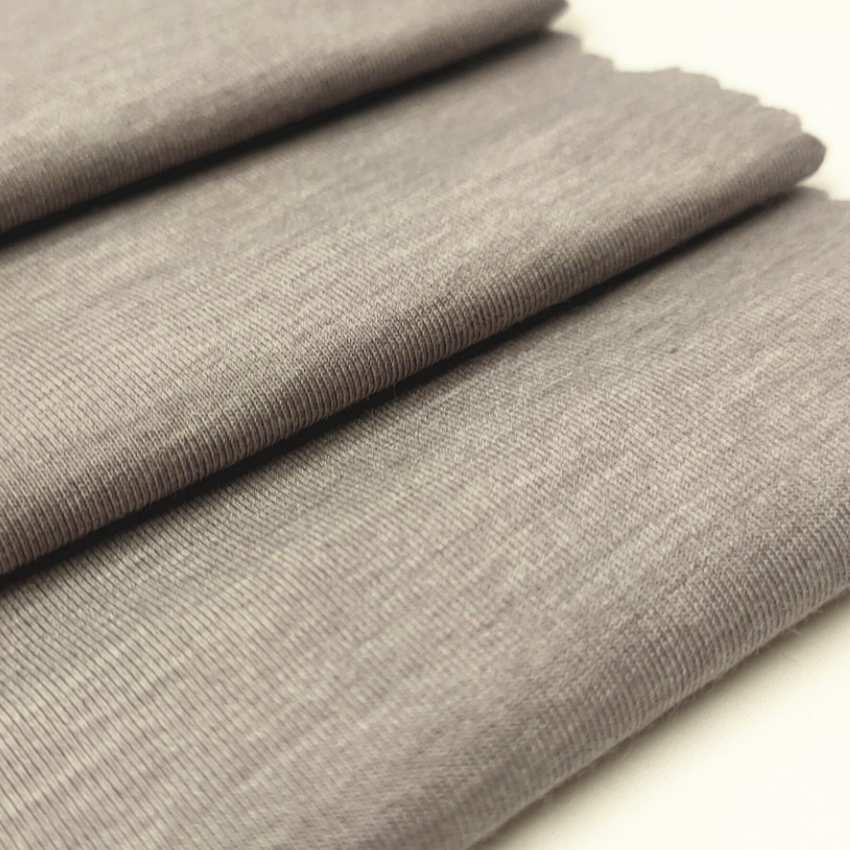Lyocell fabric and hemp are both natural fibers known for their strength and durability, but they have some differences in how they perform in these aspects:
- Lyocell Fabric:
- Strength: Lyocell fabric is known for its high strength-to-weight ratio, making it remarkably strong despite its lightweight and soft texture. The fibers have excellent tensile strength, meaning they can withstand pulling or stretching forces without breaking easily.
- Durability: Lyocell fabric is highly durable and resistant to wear and tear. It has good abrasion resistance, which means it can withstand friction and rubbing without showing signs of damage or deterioration. Lyocell fibers also have good dimensional stability, meaning they retain their shape well over time.
- Hemp:
- Strength: Hemp fibers are among the strongest natural fibers available, surpassing many other natural fibers, including cotton and linen, in terms of tensile strength. Hemp fibers are known for their robustness and resilience, making them suitable for a wide range of applications that require strong and durable materials.
- Durability: Hemp fabric is extremely durable and long-lasting. It is resistant to abrasion, tearing, and stretching, making it ideal for heavy-duty applications such as upholstery, outdoor gear, and industrial textiles. China Lyocell Fabric supplier Hemp fibers also become softer and more supple with each wash, without losing their strength or durability.
In summary, both Lyocell fabric and hemp are strong and durable materials, but they have slightly different characteristics:
- Lyocell fabric is known for its lightweight, soft texture, and excellent strength-to-weight ratio. It is highly durable and resistant to wear and tear, making it suitable for a wide range of clothing and textile applications.
- Hemp is prized for its exceptional strength and resilience, surpassing many other natural fibers in terms of tensile strength. Hemp fabric is extremely durable and long-lasting, with excellent resistance to abrasion and stretching, making it ideal for rugged and high-performance applications.
Ultimately, the choice between Lyocell fabric and hemp depends on the specific requirements of the application, including desired strength, durability, texture, and performance characteristics. Both materials offer excellent qualities and can be used effectively in a variety of textile products.
What steps are taken to ensure that Lyocell Fabric production does not contribute to soil degradation or water pollution?
To ensure that Lyocell fabric production does not contribute to soil degradation or water pollution, several steps are typically taken throughout the production process:
- Sustainable Sourcing of Raw Materials: The raw material used to produce Lyocell fabric is typically wood pulp derived from sustainably managed forests or plantations. These forests are managed according to responsible forestry practices, which aim to minimize environmental impact, protect biodiversity, and maintain soil and water quality.
- Closed-Loop Production Process: Lyocell production often utilizes a closed-loop process, where solvents and chemicals used in the manufacturing process are recycled and reused to minimize waste and environmental impact. This helps prevent the release of harmful substances into the environment, reducing the risk of soil and water contamination.
- Effluent Treatment and Recycling: Effluent generated during the Lyocell production process, including wastewater and chemical residues, undergoes treatment to remove contaminants before discharge. Advanced treatment technologies, such as biological treatment and filtration, are often employed to ensure that effluent meets regulatory standards and does not pollute water bodies or soil.
- Chemical Management and Reduction: Efforts are made to minimize the use of chemicals in the Lyocell production process and to substitute hazardous substances with safer alternatives whenever possible. China Lyocell Fabric manufacturers Chemical inputs are carefully managed and monitored to reduce the risk of environmental contamination and soil degradation.
- Environmental Compliance and Certification: Lyocell producers may adhere to strict environmental regulations and standards to ensure compliance with legal requirements and industry best practices. Additionally, some producers seek certification from independent organizations, such as the Forest Stewardship Council (FSC) or the Programme for the Endorsement of Forest Certification (PEFC), to demonstrate their commitment to sustainable and responsible production practices.
- Life Cycle Assessment: Life cycle assessments (LCAs) are conducted to evaluate the environmental impact of Lyocell production from raw material extraction to end-of-life disposal. By analyzing the entire production process, including resource use, energy consumption, emissions, and waste generation, LCAs help identify opportunities for improvement and optimization to minimize environmental footprint.
- Stakeholder Engagement and Transparency: Lyocell producers engage with stakeholders, including local communities, environmental organizations, and regulatory agencies, to address concerns, gather feedback, and promote transparency in their operations. Open communication and collaboration help build trust and ensure that production practices align with environmental and social priorities.
By implementing these measures and practices, Lyocell fabric production can minimize its environmental impact and reduce the risk of soil degradation and water pollution, contributing to more sustainable and responsible textile manufacturing.
